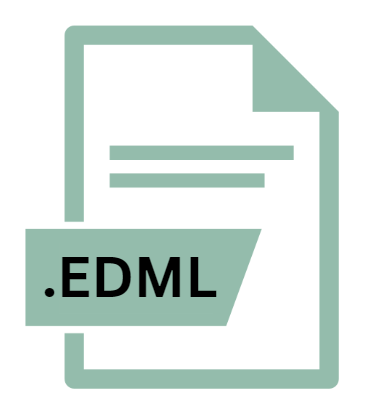.EDML File Extension

Adobe Extension Data Markup Language Document
| Developer | Adobe Systems |
| Popularity | |
| Category | Developer Files |
| Format | .EDML |
| Cross Platform | Update Soon |
What is an EDML file?
.EDML file extension holds a significant role, particularly within the Adobe ecosystem.
This article delves into the origin, history, technical aspects, advantages, and disadvantages of the Adobe Extension Data Markup Language Document (.EDML), along with guidance on how to convert and open these files across different operating systems.
More Information.
The history of the .EDML file extension can be traced back to the evolution of Adobe’s approach to extensibility within its software ecosystem.
As Adobe applications expanded in complexity and functionality, the need arose for a standardized method to create, package, and distribute extensions. Thus, Adobe introduced the Adobe Extension Data Markup Language (.EDML) to fulfill this requirement.
Initially, the purpose of .EDML files were to serve as a structured format for defining the contents and behavior of Adobe extensions.
This included specifying user interface elements, functionality, data interactions, and other relevant metadata necessary for extension development and integration with Adobe software.
Origin Of This File.
The .EDML file extension is closely associated with Adobe software products, primarily Adobe Creative Cloud. It serves as a markup language utilized to define the structure and content of various types of extensions within Adobe applications.
Extensions are supplemental software components that enhance the functionality of Adobe software, providing users with additional features, tools, or integrations.
File Structure Technical Specification.
The .EDML file follows a structured format based on XML (eXtensible Markup Language), a widely used standard for defining hierarchical data formats.
XML provides a flexible and human-readable syntax for representing structured data, making it suitable for defining complex extension configurations.
Within an .EDML file, developers can define various elements such as:
- Extension Metadata: Information about the extension, including its name, version, author, description, and compatibility details.
- User Interface Components: Definitions for menus, panels, dialogs, buttons, and other UI elements associated with the extension.
- Functionality: Specifications for the behavior and functionality of the extension, including event handling, data processing, and communication with Adobe software.
- Dependencies: Declarations of any external dependencies or libraries required by the extension to function properly.
The technical specifications of .EDML files are documented by Adobe and are subject to updates and revisions as Adobe software evolves.
How to Convert the File?
Converting .EDML files to other formats typically involve extracting the underlying XML data and transforming it according to the desired output format.
This process may vary depending on the specific tools and workflows involved. Common approaches include:
- XML Parsing & Transformation: Utilizing XML parsing libraries or tools to extract data from .EDML files and convert it to alternative formats such as JSON, CSV, or proprietary data structures.
- Adobe Extension Packaging: Packaging .EDML files along with associated assets and resources into Adobe Extension Package (.ZXP) files for distribution and installation within Adobe Creative Cloud applications.
- Custom Scripting: Developing custom scripts or automation workflows to handle .EDML file conversion tasks programmatically, leveraging APIs or scripting languages supported by Adobe software.
Advantages And Disadvantages.
Advantages:
- Standardization: .EDML provides a standardized format for defining extension configurations, ensuring compatibility and interoperability across Adobe software products.
- Flexibility: XML-based syntax allows for the creation of complex extension configurations with ease, accommodating a wide range of functionalities and user interface elements.
- Integration: .EDML files seamlessly integrate with Adobe software development tools and workflows, facilitating extension development and deployment.
Disadvantages:
- Complexity: Creating and editing .EDML files may require familiarity with XML syntax and Adobe extension development concepts, which can be challenging for novice developers.
- Maintenance: As Adobe software evolves, .EDML files may require updates and modifications to remain compatible with newer versions, necessitating ongoing maintenance efforts.
- Dependency Management: Managing dependencies and compatibility issues with external libraries or Adobe software versions can be complex, particularly in large-scale extension projects.
How to Open EDML?
Open In Windows
- Ensure Adobe Creative Cloud applications are installed on the system.
- Double-click the .EDML file, or right-click and choose “Open with…” Adobe application (e.g., Adobe Photoshop, Adobe Illustrator).
- The associated Adobe application will launch, loading the .EDML file for editing or viewing within its interface.
Open In Linux
Open In MAC
- Confirm Adobe Creative Cloud applications are installed and updated on the macOS device.
- Similar to Windows, either double-click the .EDML file or right-click to select the preferred Adobe application for opening.
- The chosen Adobe application will launch, allowing users to access and modify the .EDML file as needed.













